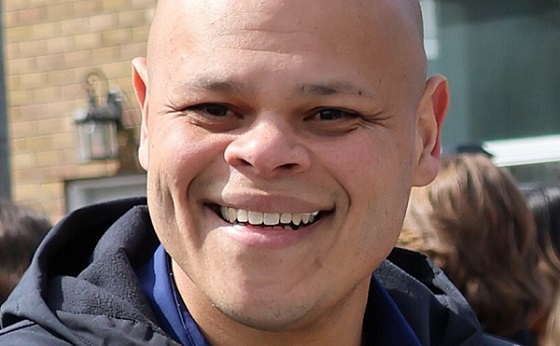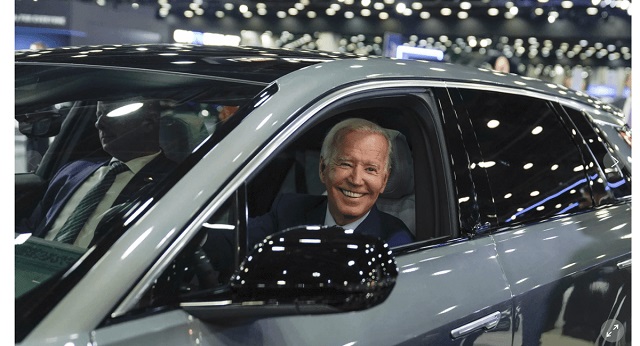Daily Caller
Gain of Function Advocate Now Has Keys To Fauci’s Old Agency


From the Daily Caller News Foundation
By Emily Kopp
The new head of Anthony Fauci’s former institute has accrued an extraordinary amount of research money and power in recent weeks despite a long career conducting just the sort of high-risk virology that President Donald Trump’s health leaders have vowed to stamp out.
Virologist Jeffery Taubenberger, a longtime Fauci ally who for more than a decade has defended the practice of enhancing viruses known as gain-of-function (GOF) virology, ascended to the top of the National Institute of Allergy and Infectious Diseases (NIAID) on April 24. His bosses, Health and Human Services (HHS) Secretary Robert F. Kennedy Jr. and National Institutes of Health (NIH) Director Jay Bhattacharya, oppose GOF as potentially catastrophic.
One week after Taubenberger became head of NIAID, HHS announced May 1 that it would make a half a billion-dollar investment in a vaccine technology co-invented by Taubenberger. Taubenberger could receive royalty payments and lab investments should the taxpayer-funded bet on the vaccine technology prove successful, according to government watchdog Open the Books (OTB).
Dear Readers:
As a nonprofit, we are dependent on the generosity of our readers.
Please consider making a small donation of any amount here.
Thank you!
Taubenberger’s rise to the top of the second largest subagency at Bhattacharya’s NIH follows a career marked by headline-grabbing GOF research.
Taubenberger’s most famous experiments involved what his lab’s website refers to as “archaevirology”— reviving the 1918 Spanish flu that killed up to 100 million people from a body preserved in permafrost. Taubenberger has also participated in experiments to splice genes from 1918 flu with contemporary H1N1 viruses. Critics like Kennedy and Bhattacharya say gain-of-function experiments like these have no public health benefit.
Taubenberger did not respond to requests for comment for this story.
‘The Complaining Crowd’
As the virologist behind some of the most famous GOF experiments in history, Taubenberger worked with Fauci to advocate for the discipline against the concerns from other scientists about lab-born pandemics, emails obtained through the Freedom of Information Act show.
“The complaining crowd”: That’s how Taubenberger referred in a May 2020 email to people concerned about one of the earliest and most hotly debated GOF experiments — the creation of an airborne H5N1 avian influenza virus. The World Health Organization estimates the fatality rate of H5N1 to be roughly 50%.
Taubenberger’s elevation to NIAID director shows the practical challenges of “draining the swamp.” Kennedy and Bhattacharya, despite ambitions for upheaval, face an entrenched Washington bureaucracy.
Taubenberger’s leadership of the $6.6 billion institute is temporary, but it comes at a sensitive moment.
As the head of NIAID, the agency that underwrites most federally-funded GOF, Taubenberger is well-positioned to influence new regulations. His leadership coincides with a 120-day sprint to ban “dangerous gain-of-function research.” Trump signed an executive order on May 6 that started the clock on a four-month process to hammer out the precise language.
“I was very disappointed by the appointment of Jeffrey Taubenberger as head of NIAID,” Laura Kahn, a pandemic expert and coauthor of the book “One Health and the Politics of COVID-19,” told the Daily Caller News Foundation. “Given Taubenberger’s research history, his appointment suggests that such work will continue to be supported by NIAID despite Trump’s executive order. Have we learned nothing from COVID-19?”
Taubenberger’s reconstruction of the 1918 influenza virus “sent a terrible message to China and Russia that dangerous GOF work was acceptable,” Kahn said.
In contrast, virologists who support GOF have praised the pick.
“He’s a senior scientist at NIH and a collaborator of Matthew Memoli who was acting NIH director … Huge plus that the lab leak conspiracists over on X are so upset about it,” wrote University of Sydney virologist Eddie Holmes on BlueSky. Holmes is a collaborator of Taubenberger and one of the virologists who aided Fauci in downplaying a possible lab origin of COVID in 2020.
When the COVID-19 pandemic emerged, Taubenberger worked with Fauci’s disgraced senior scientific adviser David Morens to defend the researchers who had conducted GOF research in Wuhan. He and Morens coauthored a July 2020 scientific paper arguing that “theories about a hypothetical man-made origin” of the coronavirus “have been thoroughly discredited.”
The article published at an opportune time for Wuhan Institute of Virology collaborator Peter Daszak, whose organization EcoHealth Alliance faced the possible clawback of NIH funding if it couldn’t produce critical data about its coronavirus research in China. Morens described the article as one that “defends Peter and his Chinese colleagues.”
Sure enough, Daszak received a new $7.5 million grant from NIAID by August 2020 even without turning over information from Wuhan.
Morens later faced bipartisan criticism in 2024 for emails exposing his attempts to evade the Freedom of Information Act in his communications with Daszak, a longtime friend. Morens said that he would “delete any smoking guns.”
With help from officials within NIH like Taubenberger, Daszak stalled the suspension of his NIH funding. It was roughly four years later, after a congressional investigation, that EcoHealth and Daszak faced a federal funding suspension and, eventually, debarment.
‘Nature Is The Ultimate Bioterrorist’
Taubenberger’s public statements on GOF research — while more measured than the private communications mocking people with concerns — contrasts starkly with that of his bosses.
“In considering the threat of bioterrorism or accidental release of genetically engineered viruses, it is worth remembering that nature is the ultimate bioterrorist,” reads Taubenberger’s 2012 article defending the avian influenza experiment.
That position directly contradicts comments Bhattacharya gave on May 7 in a television interview citing that work as emblematic of the GOF the NIH plans to fetter out.
“That avian influenza work, I think it was in 2010 or 2011, and it led President Obama to actually put a freeze on all gain-of-function work which President Obama lifted almost on his last day in office in 2017,” Bhattacharya said in an interview with Newsmax. “Anything that puts the American people at risk like this is not something we at the NIH should be doing.”
Kennedy too was critical of that experiment in his 2023 book “The Wuhan Cover-Up And the Terrifying Bioweapons Arms Race.”
Morens grumbled in an April 2020 email that he and Taubenberger had defended GOF research before against “Ludditism.”
“I am sure both of you remember the GOF attacks of a decade ago,” he said. “tony, me, Jeff Taubenberger, and many others here had to do battle with a lot of craziness. … It was much less [sic] about science than [it] was about Ludditism.”
In a separate May 2020 email, Morens reiterates the important role that he and Taubenberger played in advocating for GOF and combating the concerns of scientists at Stanford University, Harvard University and Rutgers University, which he described as “demagoguery.”
“As Tony’s scientific advisor, i spent much of the year, along with Jeff T, helping brief him and get him up to speed,” he said.
‘Leopard That Hasn’t Changed Its Spots’
The COVID-19 pandemic did not appear to dampen Taubenberger’s enthusiasm for GOF research. Taubenberger said in a December 2022 podcast interview with another prominent advocate for GOF virology that he aspired to revive other pre-1918 pandemic viruses through “archival tissues” from human autopsies, including viruses that caused pandemics in the Middle Ages.
“With the newer molecular techniques, I’ve consistently remained hopeful that someday the magic tissue sample will be found,” Taubenberger said.
The Central Intelligence Agency, the Federal Bureau of Investigation and the Department of Energy all have intelligence pointing to a lab origin of COVID-19.
Taubenberger’s support of GOF research three years after COVID-19 emerged is troubling, according to Andrew Noymer, an associate professor of population health and disease prevention at the University of California, Irvine.
“Any leopard that hasn’t changed its spots already in the light of SARS-CoV-2, I’m skeptical will change its spots now,” Noymer said to DCNF. “I’m all for road to Damascus conversions, but if you can be pro-gain of function in December 2022, then it seems to me you’re a dyed in the wool pro-gain-of-function person and therefore not the right choice to implement the recent executive order.”
Vaccine ‘Gold’
Within a week of Taubenberger taking the reins at NIAID, he started ruffling feathers.
HHS will devote massive departmental resources toward the development of a flu vaccine platform co-owned by Taubenberger in the hopes it will provide broad protection against multiple strains of pandemic-capable flu viruses, the department announced earlier this month.
HHS has dubbed the initiative “Generation Gold Standard.”
The money has been rejiggered from a $5 billion investment by the Biomedical Advanced Research and Development Authority (BARDA) and NIAID in next generation COVID-19 vaccines announced in 2023.
The vaccine prototypes — blandly named “BPL-1357” and “BPL-24910” — are BPL-inactivated whole-virus vaccines, a technology that has been in use since the 1950s. “BPL” stands for beta-propiolactone, a chemical used in vaccines to inactivate viruses, destroying their infectivity while retaining their ability to provoke an immune response.
Taubenberger holds two patents titled “Broadly Protective Inactivated Influenza Virus Vaccine.”
The new investment builds on the research of Taubenberger and his longtime collaborator Matthew J. Memoli, Bhattacharya’s principal deputy.
HHS said in its statement announcing Generation Gold Standard that the investment has “freedom from commercial conflicts of interest.”
But there’s another apparent conflict of interest: Should the vaccine prove safe and effective, Taubenberger could earn up to $150,000 annually and additional funds for his lab, per an investigation into NIH royalty payment rules by OTB.
NIH insists firewalls prevent the undue influence of patent holders on grant-making decisions but with few specifics. Then-NIH Acting Director Lawrence Tabak could not precisely describe the firewalls when pressed by congressional Republicans in May 2022, according to an August 2023 OTB investigation.
Some scientists criticize the surge in HHS resources toward a decades-old technology, according to press reports.
The investment is a major career milestone for Taubenberger, a Fauci-aligned expert who has not only survived but thrived in a department now led by self-declared “renegades” like Kennedy.
The success comes despite a career and declared worldview starkly at odds with the renegade ethos of his bosses.
“My wife bought me a mug that says ‘my medical degree is worth more than your Google search,’” Taubenberger said in the 2022 podcast interview.
Daily Caller
US Supreme Court Has Chance To End Climate Lawfare


From the Daily Caller News Foundation
All eyes will be on the Supreme Court later this week when the justices conference on Friday to decide whether to grant a petition for writ of certiorari on a high-stakes climate lawsuit out of Colorado. The case is a part of the long-running lawfare campaign seeking to extract billions of dollars in jury awards from oil companies on claims of nebulous damages caused by carbon emissions.
In Suncor Energy (U.S.A.) Inc., et al. v. County Commissioners of Boulder County, major American energy companies are asking the Supreme Court to decide whether federal law precludes state law nuisance claims targeting interstate and global emissions. This comes as the City and County of Boulder, Colo. sued a long list of energy companies under Colorado state nuisance law for alleged impacts from global climate change.
The Colorado Supreme Court allowed a lower state trial court decision to go through, improbably finding that federal law did not preempt state law claims. The central question hangs on whether the federal Clean Air Act (CAA) preempts state common law public nuisance claims related to the regulation of carbon emissions. In this case, as in at least 10 other cases that have been decided in favor of the defendant companies, the CAA clearly does preempt Colorado law. It seems inevitable that the Supreme Court, if it grants the cert petition, would make the same ruling.
Dear Readers:
As a nonprofit, we are dependent on the generosity of our readers.
Please consider making a small donation of any amount here.
Thank you!
Such a finding by the Supreme Court would reinforce a 2021 ruling by the Second Circuit Appeals Court that also upheld this longstanding principle of federal law. In City of New York v. Chevron Corp. (2021), the Second Circuit ruled that municipalities may not use state tort law to hold multinational companies liable for climate damages, since global warming is a uniquely international concern that touches upon issues of federalism and foreign policy. Consequently, the court called for the explicit application of federal common law, with the CAA granting the Environmental Protection Agency – not federal courts – the authority to regulate domestic greenhouse gas emissions. This Supreme Court, with its 6-3 conservative majority, should weigh in here and find in the same way.
Boulder-associated attorneys have become increasingly open to acknowledging the judicial lawfare inherent in their case, as they try to supplant federal regulatory jurisdiction with litigation meant to force higher energy prices rise for consumers. David Bookbinder, an environmental lawyer associated with the Boulder legal team, said the quiet part out loud in a recent Federalist Society webinar titled “Can State Courts Set Global Climate Policy. “Tort liability is an indirect carbon tax,” Bookbinder stated plainly. “You sue an oil company, an oil company is liable. The oil company then passes that liability on to the people who are buying its products … The people who buy those products are now going to be paying for the cost imposed by those products.”
Oh.
While Bookbinder recently distanced himself from the case, no notice of withdrawal had appeared in the court’s records as of this writing. Bookbinder also writes that “Gas prices and climate change policy have become political footballs because neither party in Congress has had the courage to stand up to the oil and gas lobby. Both sides fear the spin machine, so consumers get stuck paying the bill.”
Let’s be honest: The “spin machine” works in all directions. Make no mistake about it, consumers are already getting stuck paying the bill related to this long running lawfare campaign even though the defendants have repeatedly been found not to be liable in case after case. The many millions of dollars in needless legal costs sustained by the dozens of defendants named in these cases ultimately get passed to consumers via higher energy costs. This isn’t some evil conspiracy by the oil companies: It is Business Management 101.
Because the climate alarm lobby hasn’t been able to force its long-sought national carbon tax through the legislative process, sympathetic activists and plaintiff firms now pursue this backdoor effort in the nation’s courts. But their problem is that the law on this is crystal clear, and it is long past time for the Supreme Court to step in and put a stop to this serial abuse of the system.
David Blackmon is an energy writer and consultant based in Texas. He spent 40 years in the oil and gas business, where he specialized in public policy and communications.
Daily Caller
Trump Orders Review Of Why U.S. Childhood Vaccination Schedule Has More Shots Than Peer Countries


From the Daily Caller News Foundation
By Emily Kopp
President Donald Trump will direct his top health officials to conduct a systematic review of the childhood vaccinations schedule by reviewing those of other high-income countries and update domestic recommendations if the schedules abroad appear superior, according to a memorandum obtained by the Daily Caller News Foundation.
“In January 2025, the United States recommended vaccinating all children for 18 diseases, including COVID-19, making our country a high outlier in the number of vaccinations recommended for all children,” the memo will state. “Study is warranted to ensure that Americans are receiving the best, scientifically-supported medical advice in the world.”
Trump directs the secretary of the Health and Human Services (HHS) and the director of the Centers for Disease Control and Prevention to adopt best practices from other countries if deemed more medically sound. The memo cites the contrast between the U.S., which recommends vaccination for 18 diseases, and Denmark, which recommends vaccinations for 10 diseases; Japan, which recommends vaccinations for 14 diseases; and Germany, which recommends vaccinations for 15 diseases.
Dear Readers:
As a nonprofit, we are dependent on the generosity of our readers.
Please consider making a small donation of any amount here.
Thank you!
HHS Secretary Robert F. Kennedy Jr. has long been a critic of the U.S. childhood vaccination schedule.
The Trump Administration ended the blanket recommendation for all children to get annual COVID-19 vaccine boosters in perpetuity. Food and Drug Administration (FDA) Commissioner Marty Makary and Chief Medical Officer Vinay Prasad announced in May that the agency would not approve new COVID booster shots for children and healthy non-elderly adults without clinical trials demonstrating the benefit. On Friday, Prasad told his staff at the Center for Biologics Evaluation and Research that a review by career staff traced the deaths of 10 children to the COVID vaccine, announced new changes to vaccine regulation, and asked for “introspection.”
Trump’s memo follows a two-day meeting of vaccine advisors to the Centers for Disease Control and Prevention in which the committee adopted changes to U.S. policy on Hepatitis B vaccination that bring the country’s policy in alignment with 24 peer nations.

Total vaccines in January 2025 before the change in COVID policy. Credit: ACIP
The meeting included a presentation by FDA Center for Drug Evaluation and Research Director Tracy Beth Høeg showing the discordance between the childhood vaccination schedule in the U.S. and those of other developed nations.
“Why are we so different from other developed nations, and is it ethically and scientifically justified?” Høeg asked. “We owe our children science-based recommendations here in the United States.”
-

 National2 days ago
National2 days agoLiberal bill “targets Christians” by removing religious exemption in hate-speech law
-

 C2C Journal20 hours ago
C2C Journal20 hours agoWisdom of Our Elders: The Contempt for Memory in Canadian Indigenous Policy
-

 Crime2 days ago
Crime2 days agoInside the Fortified Sinaloa-Linked Compound Canada Still Can’t Seize After 12 Years of Legal War
-

 Business1 day ago
Business1 day agoConservative MP warns Liberals’ national AI plan could increase gov’t surveillance
-

 Business2 days ago
Business2 days agoLooks like the Liberals don’t support their own Pipeline MOU
-

 Sports18 hours ago
Sports18 hours agoEgypt, Iran ‘completely reject’ World Cup ‘Pride Match’ plan
-

 Alberta19 hours ago
Alberta19 hours agoAlberta introducing three “all-season resort areas” to provide more summer activities in Alberta’s mountain parks
-

 Business2 days ago
Business2 days agoCanada Can Finally Profit From LNG If Ottawa Stops Dragging Its Feet


